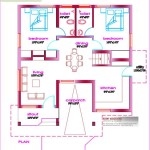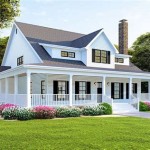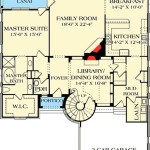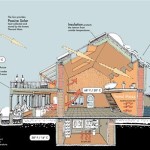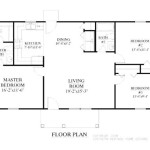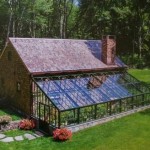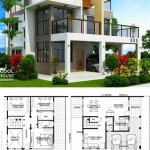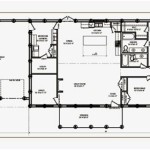House Plans for Narrow Lots with Garage: Optimizing Space and Functionality
Building a home on a narrow lot presents unique architectural challenges. Space is limited, and careful planning is crucial to ensure functionality, comfort, and aesthetic appeal. Incorporating a garage into a narrow lot house plan further complicates the design process. This article examines key considerations and design strategies for creating successful house plans for narrow lots with a garage, maximizing the available space while adhering to local building codes and homeowner preferences.
Narrow lots are generally defined as properties with a limited width, typically less than 50 feet. The specific width considered "narrow" can vary depending on local zoning regulations and the surrounding context. In urban areas, narrow lots are common due to high population density and limited land availability. Designing for these lots requires ingenuity and a focus on efficient space utilization.
The inclusion of a garage presents both challenges and opportunities. While it provides valuable storage and parking space, it also consumes a significant portion of the lot's width, potentially impacting the overall design and layout of the house. Careful consideration must be given to the garage's placement, size, and access points to minimize its impact on the living areas and outdoor spaces.
Key Point 1: Strategic Garage Placement and Orientation
The placement of the garage is one of the most critical decisions in designing a house plan for a narrow lot. Several options exist, each with its own advantages and disadvantages. The choice depends on factors such as the lot's dimensions, orientation, local zoning regulations, and the homeowners' lifestyle.
One common approach is to place the garage at the front of the house, facing the street. This configuration minimizes the amount of land needed for the driveway and provides easy access to the garage from the road. However, it can also create a less appealing street presence, as the garage may dominate the facade. To mitigate this, designers often incorporate architectural details to soften the garage's visual impact, such as decorative garage doors, landscaping, and incorporating the garage into the overall design aesthetic of the house.
Another option is to place the garage at the side of the house, if space allows. This configuration can create a more balanced facade and provide more privacy for the front of the house. However, it requires a wider lot or a smaller garage to avoid encroaching on side yard setbacks. A side-entry garage may also require a longer driveway, which can reduce the amount of usable outdoor space.
A rear-entry garage, accessed from an alley or rear lane, is another possibility, particularly in areas with established alleyway systems. This option maximizes the street appeal of the house and frees up the front yard for landscaping and other features. However, it requires access to an alley and may not be feasible in all locations. It can also create a greater distance between the garage and the front entrance of the house, which may be a security concern for some homeowners.
In some cases, a detached garage may be the best solution. This allows for greater flexibility in the house's design and orientation. The garage can be placed further back on the lot, minimizing its impact on the street presence. However, a detached garage requires additional space and may be less convenient than an attached garage, particularly in inclement weather.
Regardless of the garage's placement, its orientation is also important. The garage door should be positioned to minimize visual impact and maximize ease of access. Consider the prevailing wind direction and the sun's path when determining the garage door's orientation. Avoiding a direct west-facing garage door can help reduce heat buildup inside the garage.
Key Point 2: Maximizing Vertical Space and Interior Layout
On a narrow lot, maximizing vertical space is essential to create a comfortable and functional living environment. This can be achieved through the use of multiple stories, high ceilings, and efficient space-saving design features. The interior layout should be carefully planned to make the most of the limited floor area.
Building upwards, with two or three stories, is a common strategy for narrow lot homes. This approach significantly increases the total living area without expanding the building's footprint. However, it also requires careful consideration of structural requirements, staircase placement, and accessibility. The staircase should be located in a central location to minimize wasted hallway space and provide easy access to all levels of the house.
High ceilings can create a sense of spaciousness and airiness, even in a narrow house. They also allow for the incorporation of larger windows, which can bring in more natural light and improve the overall ambience of the interior. Consider incorporating clerestory windows or skylights to maximize natural light penetration, particularly in areas that may not receive direct sunlight.
Open-concept living spaces are well-suited for narrow lots. Combining the living room, dining area, and kitchen into a single, open area can create a more spacious and inviting environment. This also allows for greater flexibility in furniture arrangement and traffic flow. Strategically placed furniture, such as built-in shelving and multi-functional pieces, can further maximize space utilization within the open-concept design.
Smart storage solutions are crucial in narrow lot homes. Built-in cabinets, shelving units, and drawers can help organize belongings and minimize clutter. Utilizing vertical space for storage, such as tall cabinets and shelving that extends to the ceiling, can also free up valuable floor space. Consider incorporating hidden storage compartments in unexpected places, such as under stairs or in window seats.
The use of light colors and reflective surfaces can also enhance the feeling of spaciousness in a narrow house. Light walls, ceilings, and flooring can make the interior feel brighter and more open. Mirrors can be strategically placed to reflect light and create the illusion of more space.
Key Point 3: Optimizing Outdoor Spaces and Curb Appeal
While narrow lots may have limited outdoor space, it's still possible to create functional and appealing outdoor areas. Thoughtful landscaping, hardscaping, and outdoor furniture can transform a small yard or patio into a comfortable and inviting extension of the living space. Maintaining curb appeal is also crucial for enhancing the overall value and attractiveness of the property.
Vertical gardens and green walls are excellent options for maximizing greenery in small outdoor spaces. These can be incorporated into fences, walls, or balconies, adding visual interest and providing a touch of nature. Container gardening is another effective way to add plants and flowers to a limited outdoor area. Choose plants that are well-suited to the local climate and require minimal maintenance.
Patios and decks can provide valuable outdoor living space, even on a narrow lot. Consider using permeable paving materials to reduce stormwater runoff and create a more environmentally friendly outdoor area. Outdoor furniture should be chosen carefully to maximize comfort and functionality without overwhelming the space. Consider foldable or stackable furniture that can be easily stored when not in use.
Landscaping can also be used to enhance privacy and screen the house from neighboring properties. Hedges, trees, and shrubs can create a natural barrier and provide a sense of seclusion. Strategic placement of landscaping can also help to define outdoor spaces and create distinct zones for different activities.
Maintaining curb appeal is essential for creating a positive first impression. The facade of the house should be well-maintained and aesthetically pleasing. Consider incorporating architectural details that complement the surrounding neighborhood. Paint the exterior in a color that is both attractive and harmonious with the surrounding environment.
The front yard should be well-manicured and landscaped. A well-maintained lawn, attractive flower beds, and a welcoming walkway can significantly enhance curb appeal. Consider adding outdoor lighting to highlight architectural features and create a safe and inviting entryway. Ensure that the landscaping is appropriate for the local climate and requires minimal maintenance.
Finally, ensure that the garage door is well-maintained and aesthetically pleasing. A decorative garage door can significantly enhance the curb appeal of the house. Consider adding windows or other architectural details to the garage door to break up its visual bulk. Keep the driveway clean and free of clutter.
Designing house plans for narrow lots with a garage requires a careful balance of practical considerations and aesthetic preferences. By strategically placing the garage, maximizing vertical space and interior layout, and optimizing outdoor spaces and curb appeal, it is possible to create a comfortable, functional, and visually appealing home that meets the needs of the homeowners while making the most of the limited space available.

20 Luxury Narrow House Plans With Front Garage Images

Narrow Lot Home Plans By Design Basics

Narrow Lot Home Plans By Design Basics

Simple Narrow Lot House Plans Houseplans Blog Com

House Plan 81294 Narrow Lot Style With 2392 Sq Ft 3 Bed 2 Bat

Narrow House Plans With Garage 2024

Anvard Luxury Narrow Lot Villa Sater Design Collection House Plans

House Plan 75594 Narrow Lot Style With 1917 Sq Ft 3 Bed 2 Bat

Morning Star Farm House Plan Narrow Archival Designs

Hawk Hill Narrow Lot Home

